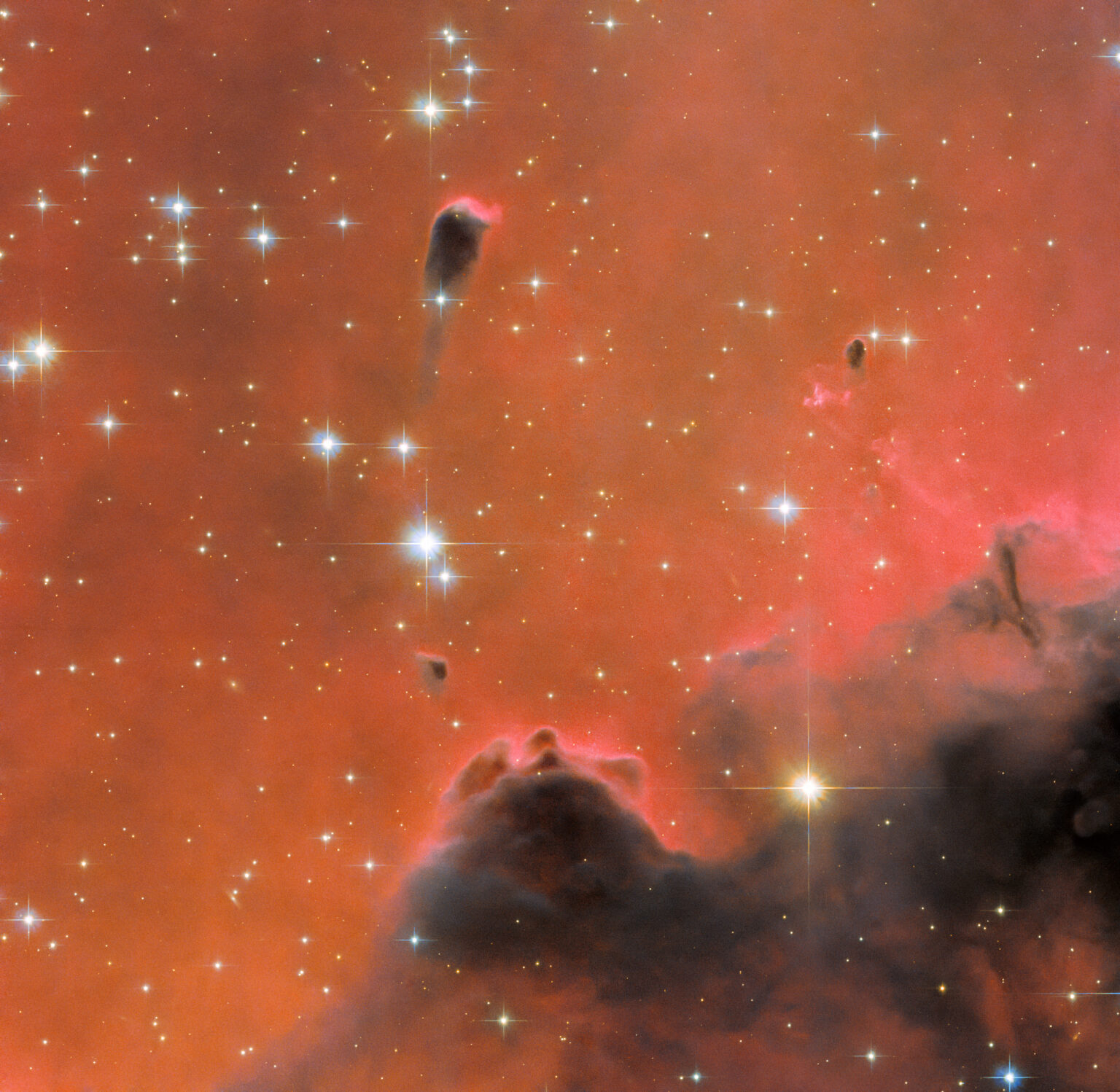The Hubble Mission Support Team has released a new image featuring unusual objects that may give rise to new stars in the future.

The image shows one area of the Westerhout 5 emission nebula, aka Soul Nebula. It is located at a distance of 7 thousand light years from Earth. Its characteristic red color is explained by the glow of ionized hydrogen atoms.
In addition to the usual stars, you can also see a number of characteristic dark clouds against the red background of the nebula. These objects are known as free-floating evaporating gaseous globules (frEGG). They are regions of increased density of interstellar hydrogen. The gas inside them is protected from the action of ionizing ultraviolet radiation.
Such formations are of great interest to astronomers. They are believed to be embryos from which stars may develop in the future. As substances from the immediate environment fall on it, the globule will begin to collapse under the influence of its own gravity. An increase in the density of matter will lead to a gradual heating of the central region. If the mass of the globule turns out to be sufficient, self-sustaining thermonuclear reactions involving hydrogen will begin in its center, turning the object into a star. If the mass is not enough, it will give rise to a brown dwarf.
Interestingly, the evaporating gas globules were discovered by astronomers relatively recently. They were first identified in photographs of the famous Pillars of Creation. Free-floating globules like those in the image above differ from ordinary ones in that they are not attached to any structures and have a characteristic shape with a “tail” and a “head”.
Based on materials from https://esahubble.org

